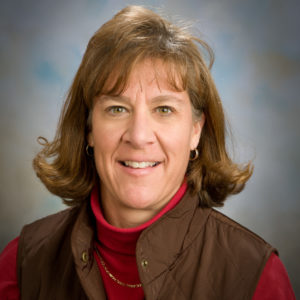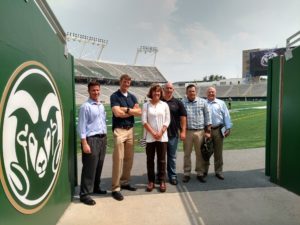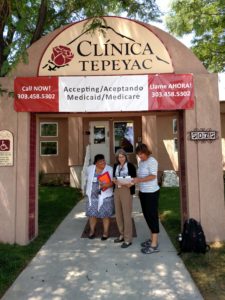Editor’s note: The Provost’s Council for Engagement is made up of a dozen faculty members representing all eight colleges and Morgan Library. Council members serve as champions for advancing the practice and recognition of engaged scholarship as fully embedded within CSU’s core teaching, research and service missions. Each month we are profiling a different member of the council, who will in their own words help showcase the diversity of engaged scholarship across campus, as well as the impact of this work on communities and the university. So far, half of the council members – Martin Carcasson, Christine Fruhauf, Neil Grigg, Bill Shuster, Robin Reid and Frank Garry – have been profiled.

This month we meet Tracy Nelson, professor in the Department of Health and Exercise Sciences, College of Health & Human Sciences, and associate director of the Colorado School of Public Health. Nelson’s interests include studying the biobehavioral influences on soldier performance and health. Her research has primarily focused on genetic and environmental risk factors, such as diet, physical activity and inflammatory factors, and chronic disease outcomes including cardiovascular, diabetes and obesity. She has collaborated extensively with faculty from the departments’ of Health and Exercise Science, Food Science and Human Nutrition, Environmental and Radiological Health Sciences as well as colleagues from the University of Colorado, Anschutz Medical campus/Colorado School of Public Health.
What, in your opinion, is ‘faculty engagement’?
“Listening to the community or society at large. Appreciating the wealth of knowledge that resides there and figuring out ways to mutually help each other to create solutions to societal issues. The best thing about faculty engagement is that the questions are largely driven by the community, so the answers immediately benefit and impact them.”
How have you, your program or students benefitted from what you have learned as an engaged faculty member? And, has there been any sort of reciprocity – or two-way learning – with the communities outside of CSU that you have been involved with?
“There is nothing more rewarding than seeing the direct impact of your work. I have a deeper appreciation, as do my students and I think my department, for the communities I/we have been working with. The rewards are immediately seen and appreciated.

There is definitely reciprocity in the work we have been doing. Dr. Lise Youngblade, professor and department head in Human Development and Family Studies, and I have been working with the 10th Special Forces Group (Airborne) or Green Berets at Fort Carson, Colorado. The data we are collecting has allowed us to use our training to look at the interaction among a multitude of variables; this has not only enhanced our research agendas but allowed the soldiers to understand how, for example, their psychological or spiritual states influence their physical performance or family dynamics.
Another project I am working on is in conjunction with La Clínica Tepeyac. The goal of this project is to implement an innovative, community-level approach to reduce chronic disease disparities in the low-income Globeville, Elyria and Swansea (GES) neighborhoods in Denver. I have assisted them and their partners in developing a community health assessment, delivering it and analyzing and applying the results. This work has enhanced my research in a multitude of ways, including driving other questions related to the National Western Center that will be developed in the next few years in this community.
I also serve as the associate director for Colorado School of Public Health at CSU. Our students conduct practicums and capstones experiences in the community where there is two-way learning as the students are able to hone their skills at the same time they are assisting the community with their goals and projects.”
Why are you involved with this council and how does it related to your work or research?

“I am genuinely excited about this council and the possibilities for highlighting and growing engaged research at CSU.
As noted above I have two ‘engaged’ research projects. The work with 10th Group stems from the longer and more frequent deployments of special operations soldiers and the issues that come with this. The United States Special Operations Command has developed a program called Preservation of the Force and the Family that focuses on the human, psychological, social/family and spiritual performance of these soldiers. Lise and I are helping them to evaluate and potentially strengthen the interventions that enhance these domains of performance.
My work with Clínica Tepeyac will not only examine the health profile of the community, but will seek feedback from the GES neighborhood on the resources and linkages they need to achieve health — particularly as their community undergoes significant development in the next 10 years. The community health assessment will also explore the common barriers that keep otherwise likely candidates for the Diabetes Prevention Program (DPP) from participating in completing the program. This will enable an assessment of barriers and formulation of an alternative, DPP-based curriculum.”
What do you hope the council is able to accomplish?
“There is a lot of energy in this group. I have enjoyed it immensely. The council members are excited about highlighting all of the ‘engaged’ scholarship and teaching within their respective colleges as well as creating capacity to generate more interest in engaged work around campus. We are currently identifying the areas of opportunity to achieve this.”